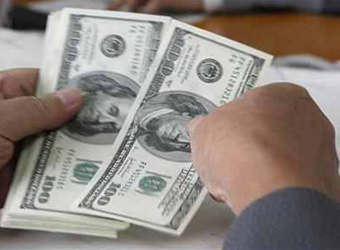The dollar rose to a 14-year peak against a basket of major currencies on Thursday after the Federal Reserve boosted the number of projected interest rate hikes for 2017, rejuvenating the month-long Trump rally and knocking emerging market currencies.
The Fed’s 25 basis-point interest rate increase on Wednesday was widely anticipated by financial markets though they appeared to have been caught out by the central bank signal of three hikes in 2017, up from around two flagged at its September policy meeting.
The relatively hawkish Fed stance came as U.S. president-elect Donald Trump takes over with promises to boost growth through tax cuts, spending and deregulation.
“The rate hike projections for 2017 being increased to three shows that Fed’s board is having to factor in the impact of Trump’s policies,” said Junichi Ishikawa, senior FX strategist at IG Securities in Tokyo.
The dollar index extended its overnight rally and was up 0.5 percent at 102.270. It touched 102.620, its highest since January 2003. The euro was down 0.2 percent at $1.0512 after sliding to $1.0468, a trough not seen in 21 months.
The greenback set a 10-month high of 117.860 yen early on Thursday and was last up 0.3 percent at 117.390.
The allure of higher U.S. yields took a predictable toll on emerging Asian currencies.
The Chinese yuan fell to its lowest levels in more than eight years, after the central bank set the daily mid-point at the lowest since mid 2008. Low-yielding currencies such as the Singapore dollar and Korean won came under pressure, as investors grew anxious over the risk of capital being sucked out of regional economies toward dollar-based assets.
The Singapore dollar fell near its January low and is on the verge of slipping to its lowest September 2009.
With the Fed out of the way, analysts say the Trump factor remains an unknown for markets, at least for now.
“Until clear signs emerge that Trump’s policies are not feasible, it is difficult swimming against the tide and take a contrarian stance on the dollar,” said Koji Fukaya, president of FPG Securities in Tokyo.
Treasury yields, a key driver of the dollar’s Trump rally, have been climbing relentlessly since early November on prospects of the new administration will embark on reflationary policies through massive fiscal spending.
Following the Fed’s move, the 10-year Treasury note yield vaulted to 2.587 percent, its highest level since September 2014, while Wall Street shares fell the most in two months overnight.
“The focus now falls on U.S. equities and whether they can withstand the surging dollar and Treasury yields. If not, we could see the Trump camp warn against the appreciation of the dollar,” Ishikawa at IG Securities said.
Analysts said Tokyo may also step up verbal warnings against any excessive yen declines versus the dollar.
“I doubt that Fed can actually raise interest rates three times next year. Last year they planned to have four rate hikes, but ended up raising only once,” said Daisuke Karakama, chief market economist at Mizuho Bank, who reckons the stronger greenback will eventually hurt the U.S. economy.
The Australian dollar was up 0.3 percent at $0.7426, trimming some losses after falling 1.2 percent the previous day against the broadly stronger dollar.
The New Zealand dollar touched a 10-day low of $0.7090.
The antipodean currencies, however, managed to gain against the Japanese yen thanks to higher domestic yields.
The Aussie touched an 11-month high of 87.27 yen and the kiwi marked an 18-month peak of 83.56 yen.
Sterling was 0.1 percent lower at $1.2553 after hitting a two-week low of $1.2515.
Source: Reuters



